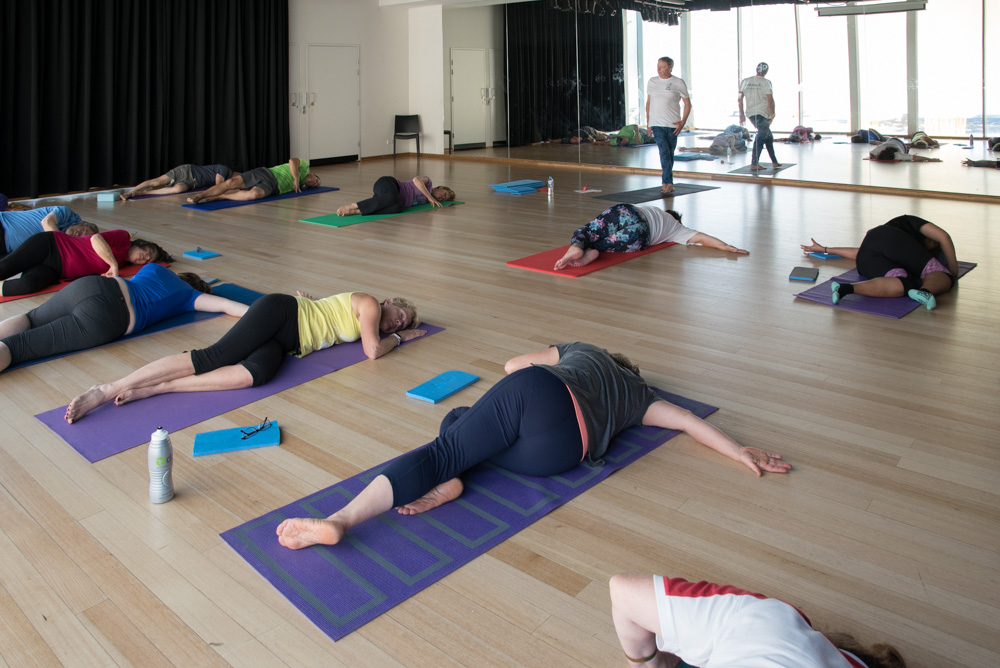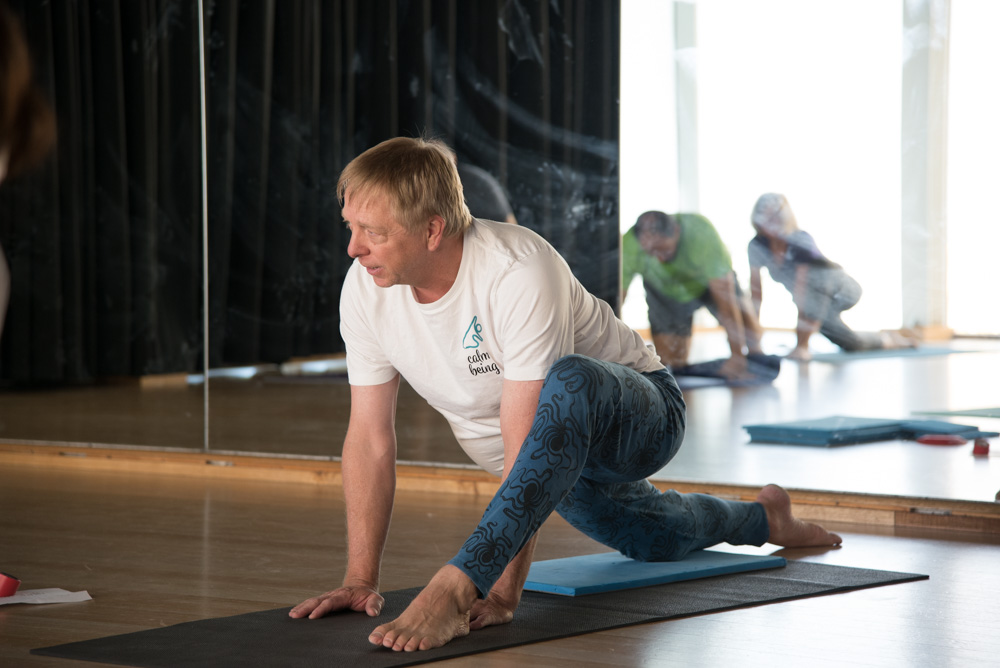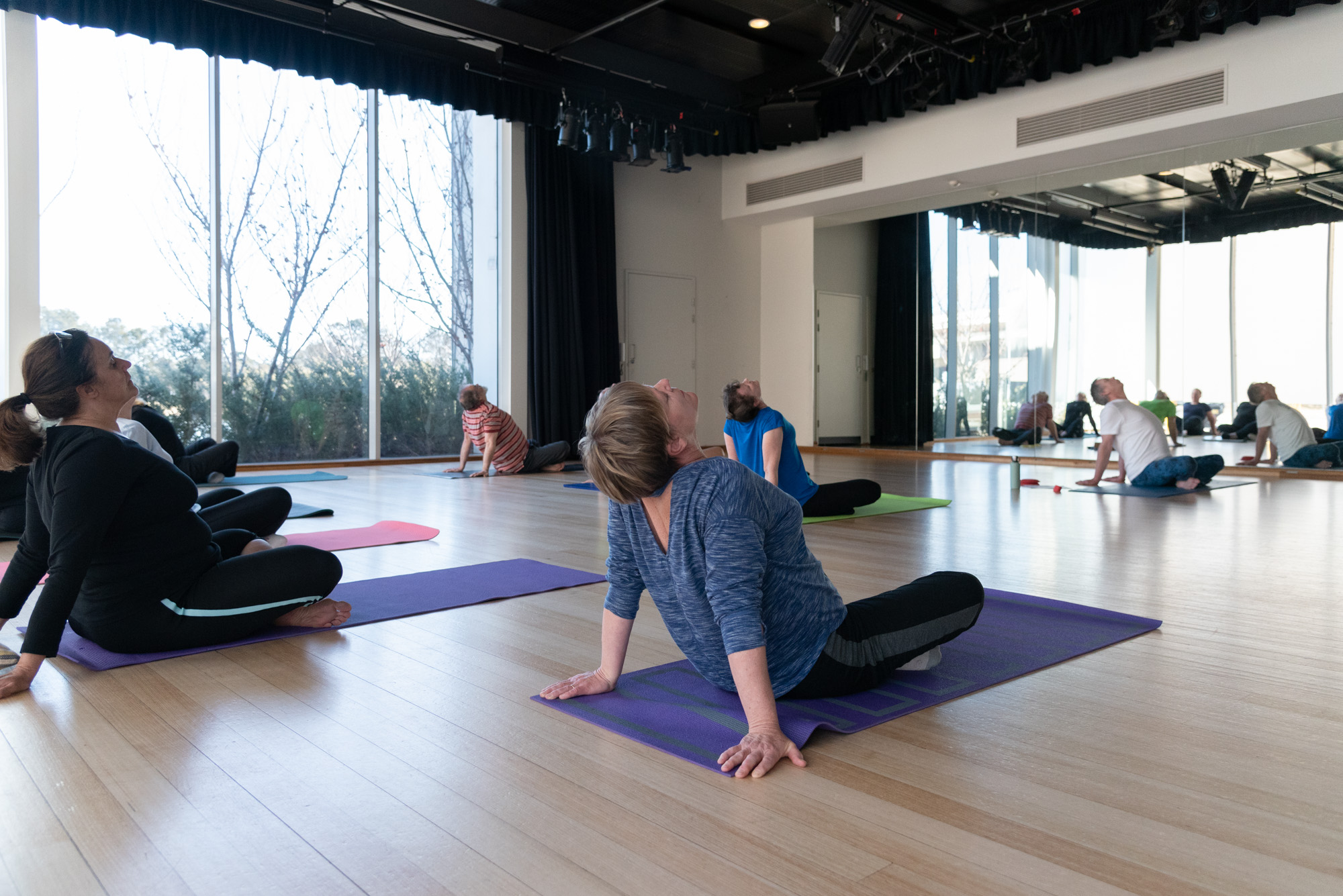
What is Mindfulness Stretching
Mindfulness Stretching is a somatic practice that calms the body by building the mind-body connection with the relaxing exhaling breath. It belongs to the school of thinking that stress and trauma are held in one’s body and that addressing the physical manifestation of stress and trauma is a powerful complement for relieving and even healing deeply held wounds and hurts.
The practice also provides physical relief for many discomforts of a sedentary life and ageing generally, and it can assist people with ADHD, improving their ability to access their brain’s cognitive Executive Function thereby reducing impulsive behaviour.
Mindfulness Stretching is couched in a western scientific perspective, as opposed to yoga’s eastern mysticism. The practice generates sensations in the body with the mind focused firmly on these sensations. It is highly accessible to vigilant and untrained minds, as it deliberately puts the practitioner’s attention onto immediately tangible bodily sensations, thereby distracting from one’s usual internal dialogue.

Who is CalmBeing?
CalmBeing is the brainchild of Principal Practitioner David Heap who has developed his practice carefully over more than a decade. His business, CalmBeing, delivers this state of peace and balance to all his clients, using Mindfulness StretchingTM as a gentle inclusive practice that allows you to stretch your way to relaxation and calm. David has been helping people in the Canberra region for many years with his gentle, deliberative and tailored approach. He understands the pressures of the professional lifestyles of Canberrans, and has developed a practice that treats both mind and body to build strength, wellbeing and peace-of-mind. The simple principle of relaxing the body to quieten the brain and ease the mind is the foundation of the CalmBeing philosophy. Mindfulness StretchingTM is the perfect antidote to the tension, stress and chronic pain that can build up as we churn through our lives in this busy, noisy, hyper-connected world.

The three pillars of the Mindfulness Stretching discipline
Using Relaxing Stretching and Guided Breathing, Mindfulness StretchingTM is a careful Somatic process of progressive relaxation to release muscle tension and relieve pain through breathing, extension and focus. Click on the links to find out more information about each of these techniques. The therapeutic benefits of each are greatly enhanced when practiced simultaneously, as participants are guided through a series of stretches that work progressively across the whole physical body.

Who is it for?
Mindfulness StretchingTM is for everyone. It doesn’t require any level of fitness or flexibility. It may particularly help those who work in stressful, office-based work environments, people who are recovering from injury and/or becoming active again after a long period of inactivity. It is suitable for people of all shapes and sizes and all ages, and is often adapted to meet the needs or limitations of individual participants.
What makes Mindfulness Stretching special?
What makes Mindfulness StretchingTM special is that it is built on the core practice of stretching without exertion, making it inherently safe for every type of body. No matter what your body shape, strength or flexibility level, Mindfulness StretchingTM works with your natural capacity for gentle movement and your own body’s instinct for its limits.
Guided by David, you stretch your body as far as it can comfortably reach without pain. Step by gentle step, tension, stress and worries are soothed away, along with chronic aches and pains, muscle tension and tightness. It is low-impact, enjoyable and gentle. It is proven as an effective activity for managing anxiety and chronic aches and pains. Mindfulness Stretching combines ancient traditional principles of meditation, mindfulness and strengthening practices such as yoga with the neuroscience behind the brain’s response to relaxation to deliver holistic health and wellbeing impact. It is a practice that encourages relaxation, strength, resilience and wellbeing in a gentle and accumulative way. Practitioners find it instils mental and emotional calm and a sense of inner quietness. It is also demonstrated to reduce chronic aches and pain. Practitioners report a reduction in the need for physiotherapy and other more interventionist treatment options. The physical relaxation of the body brought about by the progressive stretching techniques reduces chronic aches and pains and removes the physical manifestation of chronic stress. This practice is designed for people of all levels of fitness and flexibility. Relaxation Stretching practices are very safe. By their nature, they have an inbuilt internal safety mechanism. When a muscle does not feel intrinsically safe it is not likely to relax and extend, so the body’s apprehension reflex prevents extension and the breath is often held. The body will not naturally relax into an injury making the practice intrinsically protective. As well, most relaxation stretches involve only a small distance of extension (1-2mm). The Guided Breath Practices bring participants to the edge of the range of motion before the contract/relax process is initiated. This small extension brings the most benefit whilst minimizing the risk of injury to the participant.

Classes for all ages and levels of fitness

Mental and physical benefits
- stress relief
- reduced anxiety
- reduced impact of chronic aches and pains
- reduced muscle tension
- reduced presence of the stress hormone – cortisol
- increased strength
- increased range of motion
- increased relaxation
- a deeper sense of connection and quiet
- improved balance.
